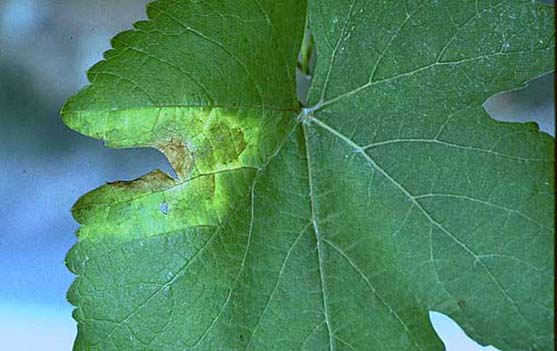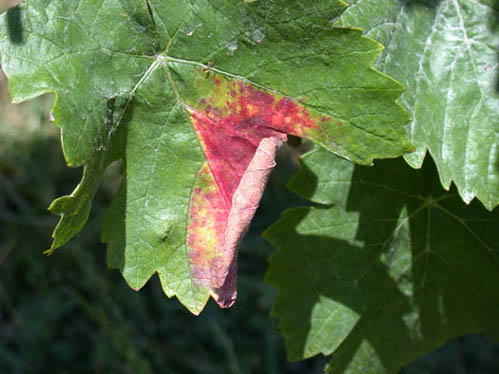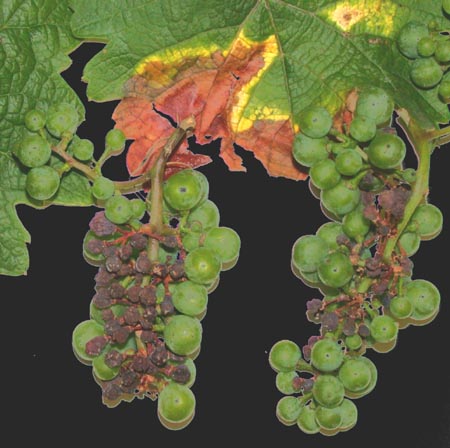
Rotbrenner
| Primefact number | Edition | Published | Author |
|---|---|---|---|
| 1272 | First | Jan 2013 | Plant Biosecurity and Product Integrity |



Pseudopezicula tracheiphila is an exotic plant pest causing rotbrenner. This disease is a serious threat to Australia’s viticulture industry.
Rotbrenner is also called roter brenner and translates from the German as red fire.
Symptoms of rotbrenner are similar to those of angular leaf scorch which is a disease of grapevines found in North America. Pseudopezicula tracheiphila is the European counterpart of the fungus P. tetraspora that causes angular leaf scorch in North America.
Notifiable status
If you suspect rotbrenner:
- Call the Exotic Plant Pest Hotline 1800 084 881
- Email biosecurity@dpi.nsw.gov.au with a clear photo and your contact details
- Report online: online form
Symptoms
Rotbrenner lesions occur on the leaves between the main and secondary veins or on the leaf edge. On white fruited cultivars lesions are initially yellow (Figure 1). On red and black fruited cultivars lesions are bright red to reddish brown (Figure 2).
Leaves which have been invaded by the fungus may fall prematurely and bunch withering can result in crop losses (Figure 3).
The fungus may attack flowers before or during bloom, causing them to rot and dry out. Only the fruit stalks are attacked. The fungus does not seem to invade the bunch stem.
Disease cycle
The fungus survives in dead leaves on the ground. In early spring fungal spores are produced which are able to infect the new season’s growth.
For infection to occur a 2-4 day period of rain or high humidity is needed with temperatures of 15-20oC.
Symptoms begin to be expressed in 3-5 weeks.
Only preventive treatments can prevent infection once the disease is established in an area.
Hosts
Most grape (Vitis vinifera) cultivars are susceptible to rotbrenner.
Spread
Rotbrenner is spread within the vineyard by water and wind borne spores.
Distribution
Rotbrenner is endemic to Europe and is very common in France and Germany.
Actions to minimise risks
Put in place biosecurity best practice actions to prevent entry, establishment and spread of pests and diseases:
- practice “Come clean, Go clean”
- ensure all staff and visitors are instructed in and adhere to your business management hygiene requirements
- source propagation material of a known high health status from reputable suppliers
- monitor your vineyard regularly
- keep records

